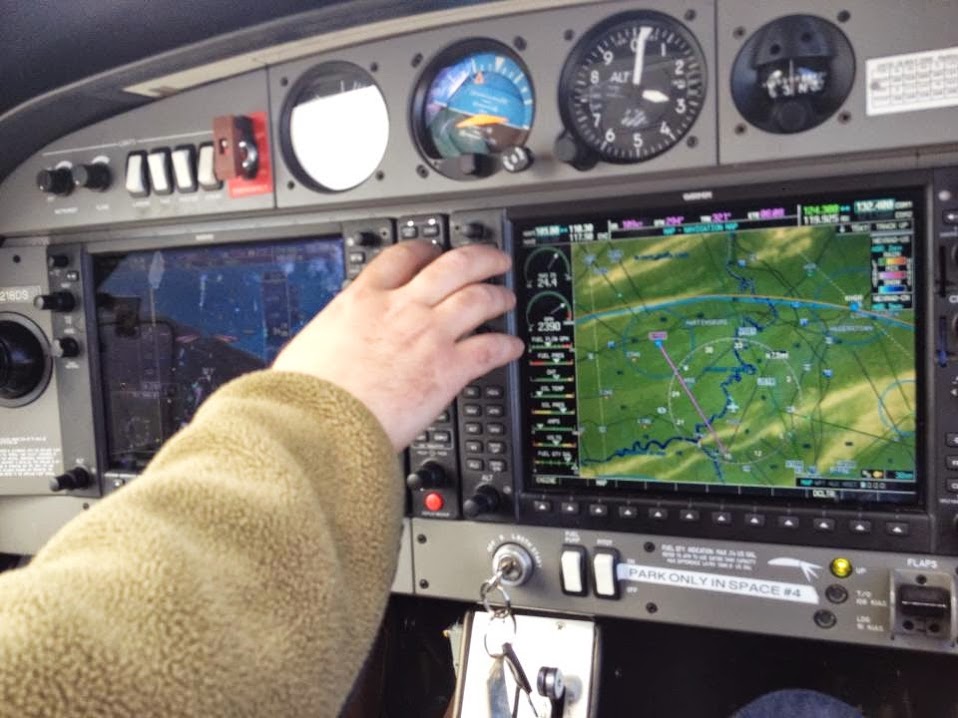High-Flying Feats of Advocacy

Every pilot has a takeoff checklist: auxiliary fuel pump, flight controls, landing gear, altimeter … the list goes on. For Jason Harmon, one of the pilots of Diabetes Formation Flight, the list includes one all-important measurement that determines whether or not he will be airborne—his blood-glucose level.
The Monrovia, MD, resident spent his high school days with his head in the clouds—literally—and dreamed of a commission in the U.S. Air Force. Soon after graduation, however, Jason was diagnosed with type 1 diabetes (T1D), and his military dream was cut short. “I had just gotten my private pilot’s license, and it was a big blow,” Jason says.
In the United States as in many other countries, T1D has long been a barrier to a handful of careers in which the safety of others is an issue—flying being chief among them. Jason has since built a successful career in healthcare technology, and his work has even helped people with T1D. But Jason is confident the remaining barriers to flying for a living will be broken in his lifetime.
Jason’s got a good head start. Thanks to the advocacy of pilots like him and the support of diabetes and aviation organizations, pilots with T1D are again stepping into the cockpit. In 1996, the United States was the first country to allow people with insulin-treated diabetes to obtain the third-class medical certificate needed to fly as a private pilot. In the years since, Canada and the UK have both caught up with and surpassed the United States. Canada now allows pilots who obtained their commercial licenses before diagnosis to continue to fly commercially. And last year, the UK lifted even that regulation, allowing anyone with well-controlled diabetes to fly commercially, regardless of his or her diagnosis date.

Of course there are regulations. A pilot in any of these countries must obtain an official medical sign-off, which is granted only when he or she can demonstrate long-term stable glucose control and an absence of side effects or complications that could affect a pilot during flight. And behind the yoke (what pilots call a steering wheel), there is a list of steps the pilot must take—testing blood glucose hourly, keeping it within a safe range, having an adequate supply of test strips and glucose on board, and others.
None of these steps is new to a person with T1D—they’re just more tightly regulated for people operating heavy, sky-bound machinery. “There have been no accidents related to diabetes on record with pilots following the protocol,” Jason says. New treatment technologies such as continuous glucose monitors, furthermore, have only made flying with T1D even safer. “Managing diabetes is the easiest element of flying. Weather is far more challenging.”
In an effort to demonstrate that, pilots in an international group called Pilots With Diabetes (PWD) have orchestrated endurance flights and gone after a few world records. Douglas Cairns—a former pilot instructor with the Royal Air Force who was diagnosed with T1D in 1989 and subsequently changed careers—is a founding member of PWD in the UK and a dedicated supporter of JDRF UK. He has racked up no fewer than 13 world records, and is going for number 14 next week.
The Diabetes Formation Flight, scheduled this year for July 29, was organized by Douglas, Jason, and Butch Weaver, another pilot with T1D, last year to raise awareness of what pilots with diabetes can safely do. This year, five pilots with diabetes will man four planes in formation from Council Bluffs, IA, to Oshkosh, WI.
And they’ll be raising more than just awareness. Through last year’s event, Jason and Douglas raised nearly $25,000 for JDRF. This year, they plan to break that record, too.
“I hope that the progress we’ve fought for in the UK can be an example not just to other countries’ aviation authorities, but also for other activities that suffer blanket bans,” says Douglas.
From where we’re standing, the sky is truly the only limit.
You can help future pilots with T1D get their wings. Donate today to the Diabetes Formation Flight JDRF fundraising drive.
Coming soon: What does Jason Harmon do when he isn’t flying? Innovating technologies that help people better manage T1D. Stay tuned this summer for an article on Get Real Health and its flagship service, InstantPHR.